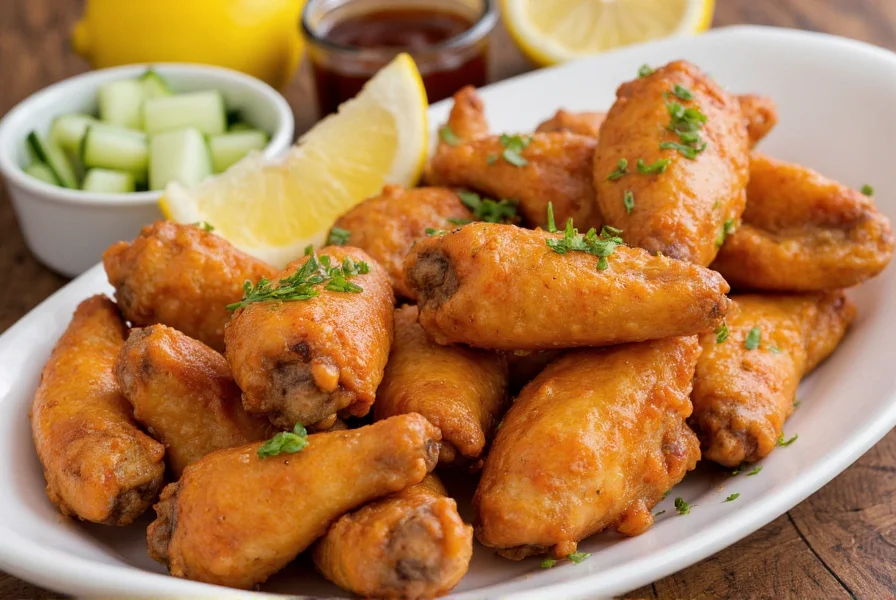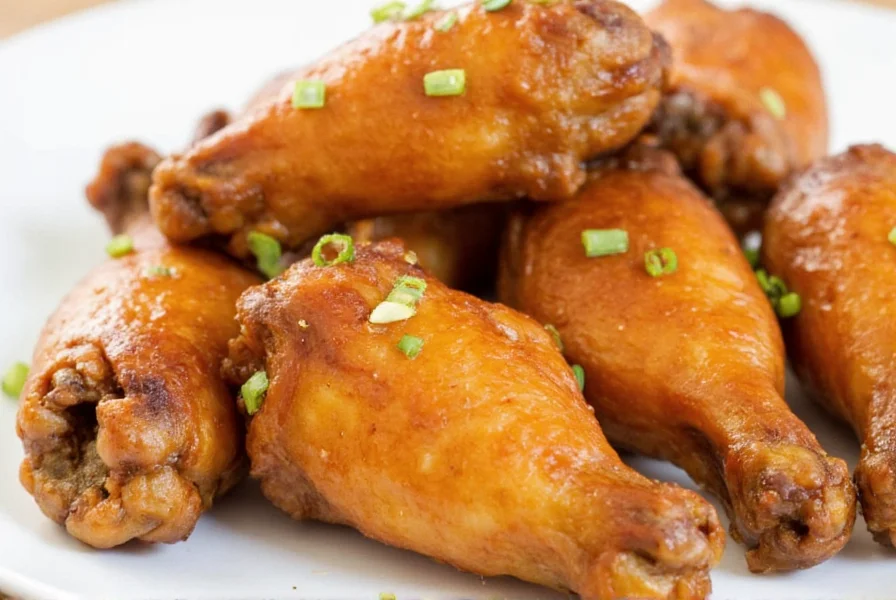If you're searching for how to make honey lemon pepper wings that achieve restaurant-quality results at home, you've found the definitive guide. This comprehensive recipe delivers wings with the perfect balance of sweet honey, bright lemon, and aromatic black pepper—no artificial flavors needed. Unlike many online recipes that oversimplify the process, our tested method ensures crispy skin, tender meat, and a sauce that clings beautifully without becoming gloppy.
Essential Ingredients for Authentic Flavor
The magic of honey lemon pepper wings comes from quality ingredients working in harmony. Don't substitute generic ingredients—each component plays a crucial role in the final taste profile.
| Ingredient | Quantity | Why It Matters |
|---|---|---|
| Chicken wings (whole) | 2 lbs | Fresh wings with skin on provide optimal texture and flavor absorption |
| Raw honey | ⅓ cup | Natural sweetness with floral notes that processed honey lacks |
| Fresh lemon juice | 3 tbsp | Bright acidity that balances sweetness better than bottled juice |
| Freshly cracked black pepper | 1½ tbsp | Essential for aromatic heat—pre-ground pepper lacks complexity |
| Garlic powder | 1 tsp | Depth without raw garlic's harshness |
| Soy sauce | 1 tbsp | Umami boost that enhances overall flavor complexity |
Step-by-Step Preparation Guide
Follow these precise steps for honey lemon pepper wings that consistently deliver perfect results. The key is proper wing preparation and sauce timing.
Wing Preparation (Critical Step)
Separate whole wings into drumettes and flats, removing wing tips. Pat wings extremely dry with paper towels—this step determines crispiness. For extra-crispy results, arrange wings on a wire rack over a baking sheet and refrigerate uncovered for 4-12 hours. This air-drying process removes surface moisture that causes steaming.
Cooking Methods Compared
You can achieve excellent honey lemon pepper wings through three methods:
- Baking method: Preheat oven to 425°F. Bake wings on wire rack for 45-50 minutes, flipping halfway, until golden and internal temperature reaches 165°F
- Air frying: Cook at 400°F for 22-25 minutes, shaking basket twice
- Frying: Deep fry at 375°F for 10-12 minutes for maximum crispness
Sauce Application Technique
The timing of sauce application makes or breaks honey lemon pepper wings. Never toss cold wings in sauce—that creates soggy results. Instead:
- Prepare sauce while wings cook: Whisk honey, lemon juice, soy sauce, garlic powder, and black pepper in small saucepan
- Simmer over medium heat for 3-4 minutes until slightly thickened
- Remove cooked wings from heat source and immediately toss in warm sauce
- Return coated wings to rack and broil for 90 seconds to set glaze

Pro Tips for Perfect Honey Lemon Pepper Wings
Achieving restaurant-quality honey lemon pepper wings at home requires attention to detail. These professional kitchen insights make the difference between good and exceptional results:
- Pepper selection matters: Use Tellicherry black peppercorns for complex flavor with less harsh heat than regular pepper
- Lemon zest boost: Add 1 tsp fresh lemon zest to sauce for intensified citrus aroma without extra acidity
- Sauce consistency: The ideal honey lemon pepper sauce should coat the back of a spoon but still drip slowly
- Temperature control: Never add sauce to wings hotter than 150°F—excessive heat causes honey to burn and become bitter
- Resting time: Let sauced wings rest 3-5 minutes before serving to allow glaze to set properly
Common Mistakes to Avoid
Many home cooks make these critical errors when preparing honey lemon pepper wings:
- Using bottled lemon juice instead of fresh (lacks brightness and contains preservatives)
- Adding sauce too early in cooking process (creates soggy texture)
- Overcooking wings before saucing (dries out meat before sauce application)
- Using honey that's been heated excessively (becomes bitter)
- Not seasoning wings with salt before cooking (essential for flavor foundation)
Serving Suggestions and Pairings
Honey lemon pepper wings pair beautifully with complementary flavors that enhance their unique profile:
- Side dishes: Cucumber salad, roasted asparagus, or jasmine rice
- Dipping sauces: Cool ranch or cilantro-lime crema to balance the pepper heat
- Beverage pairings: Crisp lager, dry Riesling, or unsweetened iced green tea
- Garnish: Extra cracked pepper and lemon wedges for visual appeal and flavor customization

Variations for Dietary Needs
Adapt this honey lemon pepper wings recipe for various dietary requirements without sacrificing flavor:
- Gluten-free: Substitute tamari for soy sauce (check label for gluten-free certification)
- Lower sugar: Replace half the honey with sugar-free maple syrup alternative
- Extra spicy: Add ¼ tsp cayenne pepper to sauce for noticeable heat boost
- Citrus variation: Substitute yuzu juice for 50% of lemon juice for more complex citrus profile
Storage and Reheating Instructions
Proper storage maintains the delicate balance of flavors in honey lemon pepper wings:
- Refrigerate in airtight container for up to 3 days
- Reheat in air fryer at 350°F for 5-7 minutes to restore crispness
- Never microwave sauced wings (melts the glaze and creates rubbery texture)
- Freeze unsauced cooked wings for up to 2 months, then sauce after reheating
Frequently Asked Questions
What's the ideal honey to lemon ratio for honey lemon pepper wings?
The perfect balance is 3 parts honey to 1 part lemon juice. This ratio delivers pronounced sweetness with bright citrus notes that cut through the richness without making the wings taste sour. Adjust to taste by adding lemon juice in ½ teaspoon increments if you prefer more tang.
Can I make honey lemon pepper wings without frying?
Yes, baking produces excellent honey lemon pepper wings with less oil. For best results, bake at 425°F on a wire rack for 45-50 minutes, flipping halfway. The wire rack allows air circulation for even crisping. Finish under the broiler for 90 seconds after saucing to set the glaze without additional oil.
Why do my honey lemon pepper wings turn out soggy?
Sogginess typically occurs from three mistakes: not drying wings thoroughly before cooking, applying sauce to wings that are too hot (causing steam), or using too much sauce. Always pat wings completely dry, let cooked wings rest 2 minutes before saucing, and use the precise sauce measurements in this recipe for optimal texture.
How can I make the pepper flavor more pronounced without making wings too spicy?
Use freshly cracked Tellicherry peppercorns and add them to warm (not hot) sauce. The larger peppercorns provide more aromatic complexity with less heat. For extra pepper flavor without additional spice, toast whole peppercorns in a dry pan for 1 minute before grinding. This enhances the floral notes while minimizing harsh heat.
What's the best way to store leftover honey lemon pepper wings?
Store sauced wings in an airtight container with parchment paper between layers to prevent sticking. Refrigerate for up to 3 days. For best results when reheating, use an air fryer at 350°F for 5-7 minutes rather than microwaving, which melts the glaze and creates a rubbery texture. Never freeze sauced wings as the glaze separates during thawing.











 浙公网安备
33010002000092号
浙公网安备
33010002000092号 浙B2-20120091-4
浙B2-20120091-4